When your Magic Chicken is suffering from cholera, there’s no need to panic. This bottle for the Magic Chicken Cholera Cure is one of around 195 medicine bottles in the collection of Michael Till, a retired GP from Gloucestershire.
Michael became interested in historical remedies after looking into the story of his practice’s founder, Dr Walter Hadwen, a prominent anti-vivisectionist who spent the early part of his career in pharmacy before qualifying as a doctor in 1893. Michael has kindly given me permission to share some of his photos with you.
Above: William Radam’s Microbe Killer – the Germ, Bacteria or Fungus Destroyer – was analysed by the A.M.A. in 1910 and shown to be more than 99% water, with traces of sulphuric acid, sulphurous acid and ash. The embossed design shows a simplified version of Radam’s logo – a man beating up Death, who takes the form of a skeleton. The line partly circling the characters’ legs is Death’s broken scythe.
Barrett’s Mandrake Embrocation – a late-Victorian topical preparation for rheumatism. The bottle shows the likeness of its proprietor, Joshua Barrett, attached to the body of a drake. Look out for a chapter about him in The Quack Doctor book, due out 1 October.
Ruspini’s Styptic, one of the products offered by Italian surgeon-dentist ‘Chevalier’ Bartholomew Ruspini, who practised in London during the second half of the 18th century. The Styptic was intended to stanch bleeding. In a nosebleed, for example, ‘…a small piece of lint, dipped in the Styptic, is to be gently inserted into the nostril; and, if the bleeding does not immediately cease, a small quantity of the Solution is to be injected with a syringe.’
A mint example of Cavania’s ‘Wonder-Worker’ for the cure of cancerous or malignant sores, ulcers, scrofulous abscesses, fistulas, &c. David Browne von Cavania advertised in Leeds from about 1860 and later in Derby. He worked in partnership with his daughter, who used the title Mademoiselle Cavania and promoted herself as the only qualified female physician in England, later continuing her practice alone as Madame Newmane. Both father and daughter claimed to have gained medical degrees in the US, but this is doubtful.
Poison!
For many more beautifully photographed antique medicine bottles, visit Michael’s Flickr page.
And for something completely different, also take a look at his website about the distant relatives who were music hall stars in the late 19th century – the superbly named ‘Till Family Rock Band‘
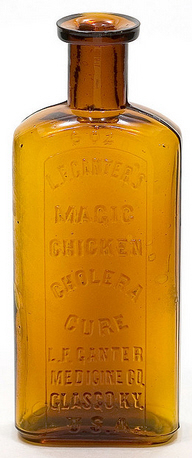
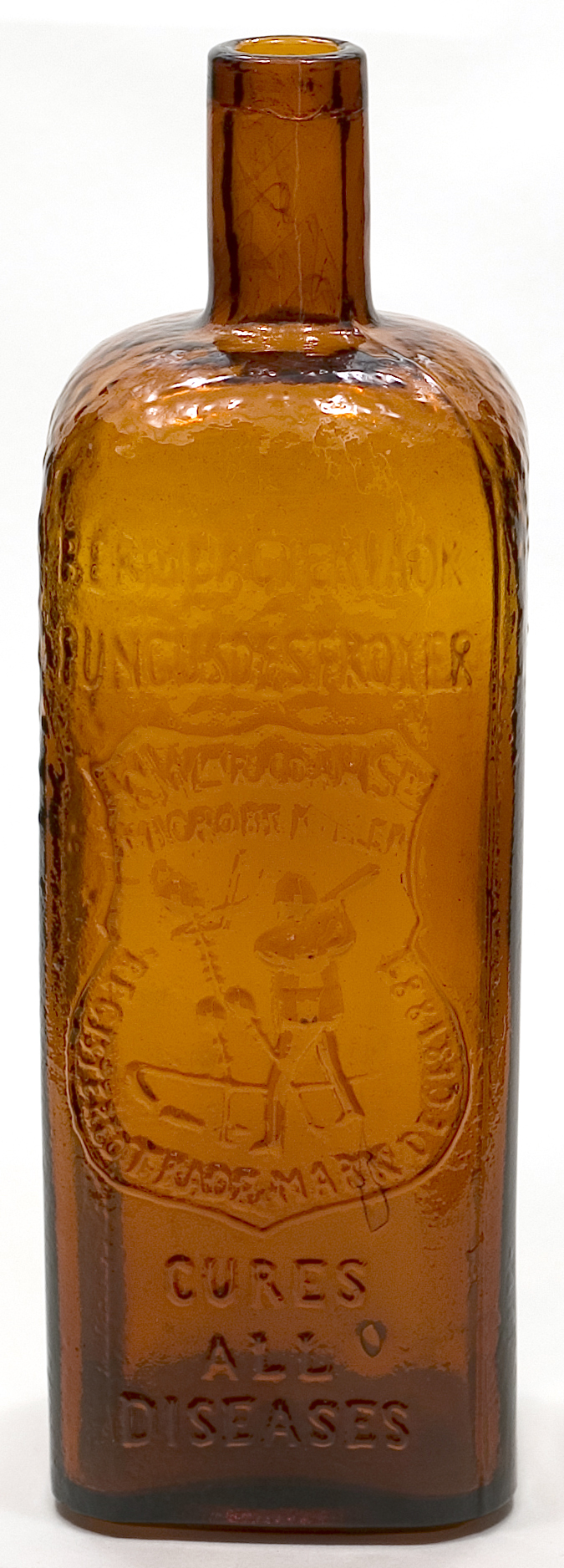
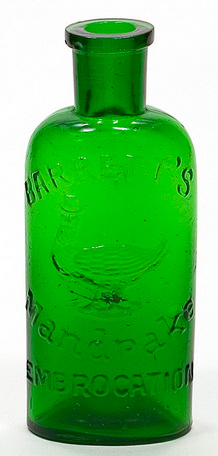
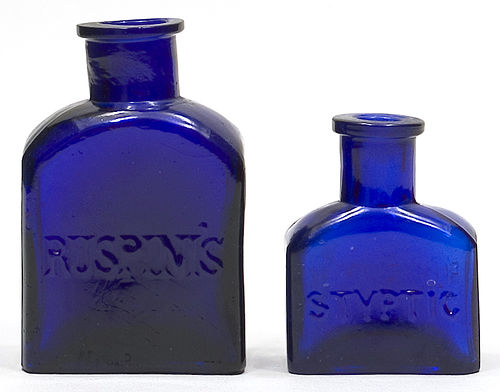
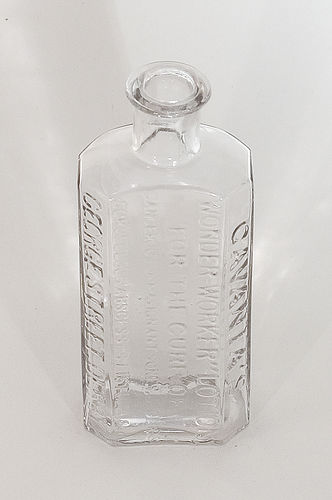
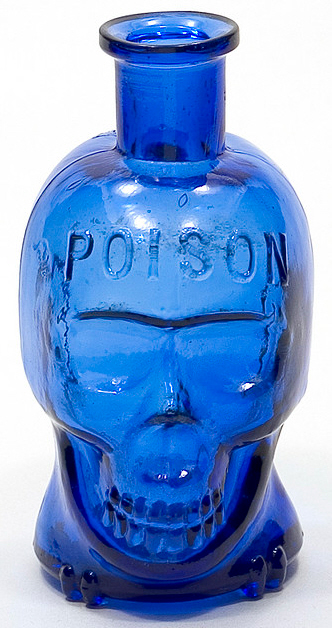


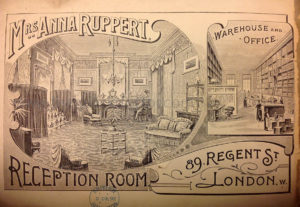
David Brown von Cavania was my great grandfather (1823-1886) and I have written a small two part biography of his life. Apart from the bottle shown above, there are five packages of his pills at the museum of the Royal Pharmaceutical society in London A huge range of his and his daughter’s advertisements can be viewed on the “19th century British Newspapers”site.
He was subject to a police “sting” operation in Leeds in 1876 resulting in a court case where he was indeed found guilty of being a “quack”. However the court proceedure was very questionable and they were obviously out for a guilty verdict, come what may. They queried his American qualifications, and when he telegraphed America and offered to bring over his college Dean to vouch for the qualifications they refused this and sentenced him anyway. No modern court would have got away with this.The Leeds Borough analyst confirmed in court that the contents of his medicines contained nothing that could harm anyone.He was fined only half the maximum possible, and as far as can be ascertained he carried on practicing!
His daughter, Esther Margaret Neumane, is first mentioned in the Leeds Times in May 1861, but it is not until 1865, in the Manchester Times, that she claims to be a “Professor of Medicine for diseases of women and children.” and “Member ofthe Eclectic Reformed Collegeof Physicians. New York, US America”, and “Diploma granted 12th day of January 1860” Internet searches reveal that the college did indeed exist and the specific date suggests the qualification may be genuine. However Esther was only born in 1843, so she was only aged 16 when she started practicing, so we would be right to be doubtful.
Shipping lists to America circa 1850 do indeed reveal several David Browns travelling there but I have no evidence of Esther’s passage.
Roger Sanders 20-11-2013
Thank you Roger – this is fascinating. How would I get hold of a copy of your biography of your great-grandfather?
Do you have access to the British Newspaper Archive? (www.britishnewspaperarchive.org.uk) There are many examples on there of a ‘Mademoiselle Cavania’ advertising as ‘Professor of Medicine for diseases of women and children’ and Member of the Eclectic Reformed College from 1861 onwards – both in the Leeds Times and the Derbyshire Times.
I wonder whether Dr C had two daughters. He appears to have still been in partnership with Mlle Cavania some years after Esther Newmane began her own practice. I also seem to remember encountering some references to an Ellen Cavania on Ancestry.
If you are interested in writing a guest post for my site I would be happy to feature it.
Best wishes
Caroline
Hello Caroline.
I will be as brief as I can. Did research and wrote/produced biography for family distribution four years ago thinking I had found all that was available. Eighteen months ago was referred to 19th century British Newspapers site and discovered over 3000 entries (adverts) for Cavania! This led to writing/production of Part 2 of biography. I will happily send you a copy of Part 2 which covers the quackery etc-bit heavy reading, bit like reference book. Have only one copy of Part 1 left-will have to see if I can find originals to print an extra.
David (perhaps Count von Kavanagh(!), but thats another story) had only one daughter, his wife dying young. At least that is the official line-it is interesting that you have located Ellen! Lived in Leeds, as did David, with a family called Taylor and appears to adopt their surname, then vanishes. But Cavania is such a rare name that there must be a connection. I suspect she may have been an illegitimate child of his. My own grandfather, Alfred Brown Sanders was the illegitimate result of a union between David and his housemaid when David was 60, though David recognisedhim as his son even in his will.
Would be pleased to discuss the guest post idea. Perhaps you could contact me via e mail where we could discuss details.
Kind regards
Roger.